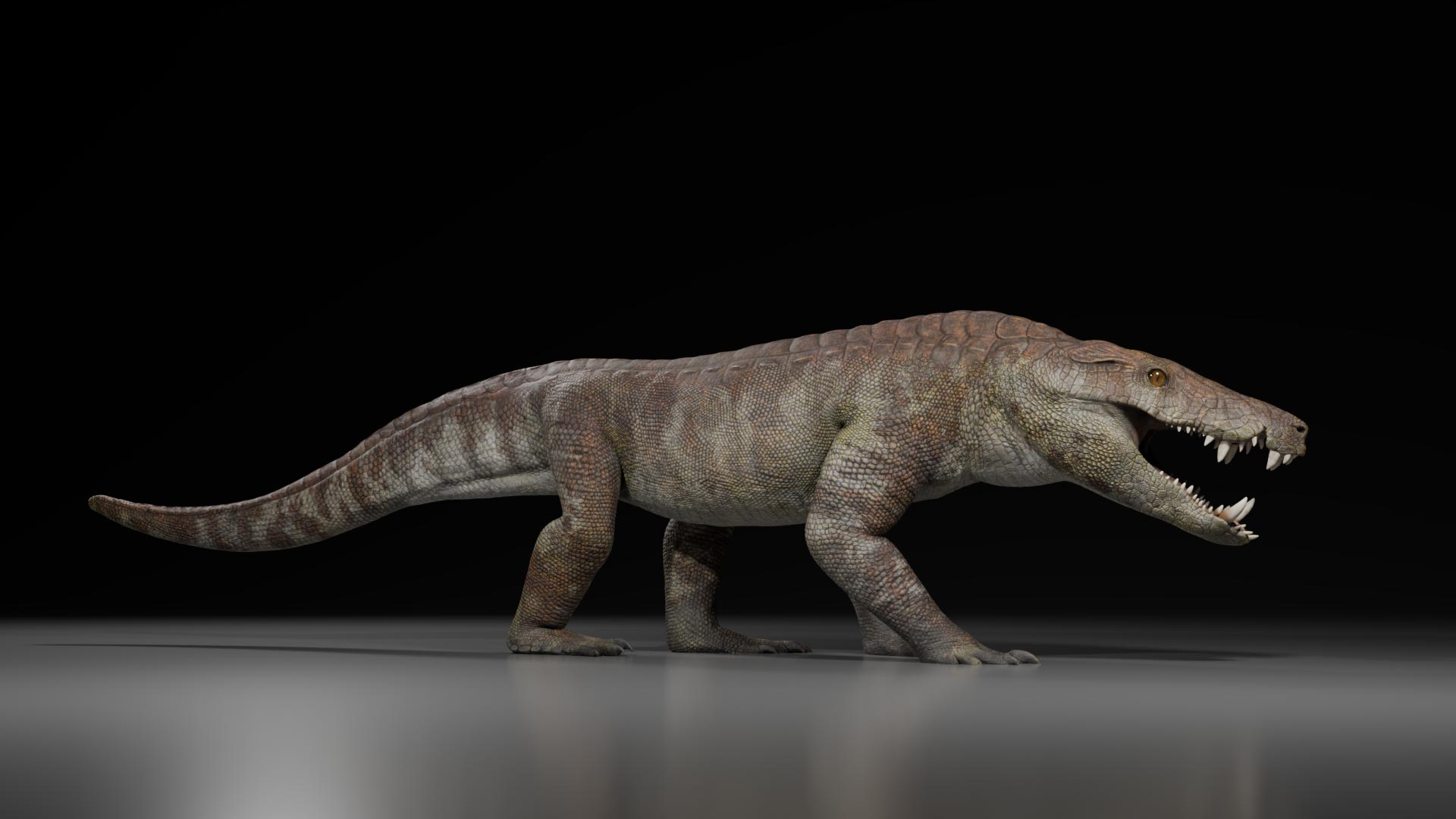Seventy million years ago, in the wetlands of prehistoric Patagonia, a terrifying predator prowled alongside dinosaurs.
Scientists have uncovered a remarkably well-preserved fossil of Kostensuchus atrox, a massive crocodile-relative stretching 11 feet long with bone-crushing jaws. This apex hunter likely fed on medium-sized dinosaurs, making it one of the top predators of its time.
Discovery of a Giant Predator
A team of researchers has identified a new species of giant predator related to crocodiles, based on an exceptionally preserved fossil discovered in Argentina. The study, led by Fernando Novas of the Museo Argentino de Ciencias Naturales “Bernardino Rivadavia” in Argentina, was published August 27, 2025, in the open-access journal PLOS One.
Around 70 million years ago, during the Maastrichtian stage at the very end of the Cretaceous period, southern Patagonia was a warm region with seasonal rains. Its river-fed floodplains supported a rich ecosystem that included dinosaurs, turtles, frogs, and early mammals.
Fossil Details Reveal a Fierce Hunter
The newly recovered specimen from the Chorrillo Formation is unusually complete, preserving a skull, jaws with well-defined features, and numerous other bones. This powerful crocodile-like predator is estimated to have measured about 3.5 meters (11.5 feet) in length and weighed close to 250 kilograms (551 pounds). Its broad jaws and large teeth suggest it hunted sizable prey, possibly including medium-sized dinosaurs.
The animal has been named Kostensuchus atrox, a reference to the fierce Patagonian wind called the Kosten in the Tehuelche language, the crocodile-headed Egyptian deity Souchos, and the Latin word atrox, meaning “fierce” or “harsh.”
Apex Predator of the Cretaceous Floodplains
K. atrox itself is not a dinosaur, but rather a peirosaurid crocodyliform, an extinct group of reptiles related to modern crocodiles and alligators. This species is the second-largest predator known to scientists from the Maastrichtian Chorrillo Formation, and the researchers believe it was likely one of the top predators in the region. K. atrox is also the first crocodyliform fossil found in the Chorrillo Formation, and one of the most intact peirosaurid crocodyliforms ever found, giving scientists unique new insight into these prehistoric animals and their ecosystem.
Reference: “A new large hypercarnivorous crocodyliform from the Maastrichtian of Southern Patagonia, Argentina” by Fernando E. Novas, Diego Pol, Federico L. Agnolín, Ismar de Souza Carvalho, Makoto Manabe, Takanobu Tsuihiji, Sebastián Rozadilla, Gabriel L. Lio and Marcelo P. Isasi, 27 August 2025, PLOS ONE.
DOI: 10.1371/journal.pone.0328561
Funding: DP 9282-R-22 National Geographic Society https://www.nationalgeographic.org/society/ The funders had no role in study design, data collection and analysis, decision to publish, or preparation of the manuscript. ISC Faperj E-26/200.998/2024 Fundação Carlos Chagas Filho de Amparo à Pesquisa do Estado do Rio de Janeiro https://www.faperj.br/ The funders had no role in study design, data collection and analysis, decision to publish, or preparation of the manuscript. ISC CNPq 303596/2016-3 Conselho Nacional de Desenvolvimento Científico e Tecnológico https://www.gov.br/cnpq/pt-br The funders had no role in study design, data collection and analysis, decision to publish, or preparation of the manuscript.
Never miss a breakthrough: Join the SciTechDaily newsletter.
Source link
